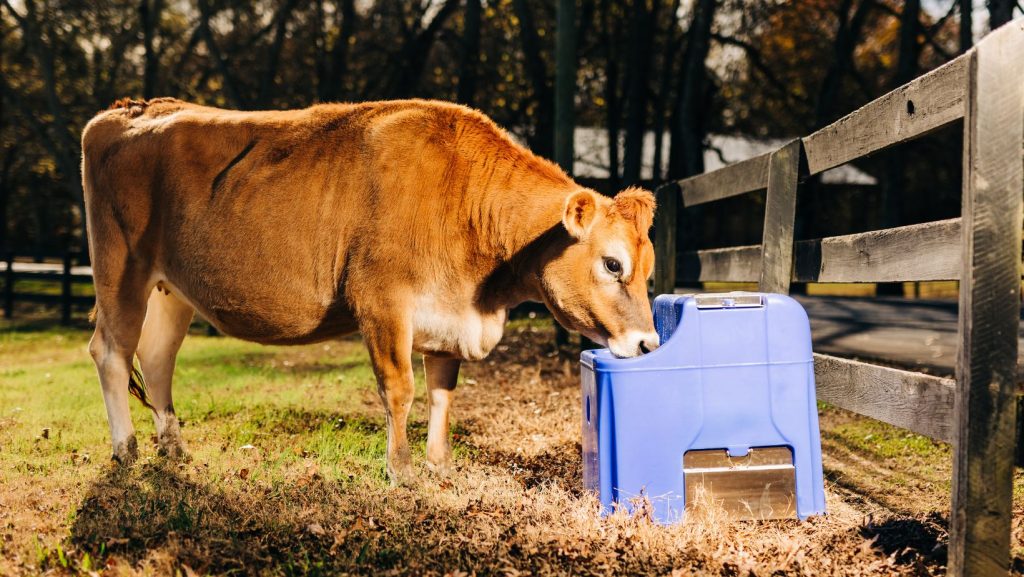
As temperatures rise, summer heat poses significant challenges for livestock. Keeping animals comfortable and cool is not just about their well-being; it’s also crucial for maintaining productivity and health. By adopting practical strategies, you can ensure your livestock stay cool and hydrated throughout the hottest months. This blog post will provide six actionable tips to help you maintain optimal conditions for your animals, safeguarding their health and your investment.
#1. Shade and Ventilation are Key
Providing ample shade and proper ventilation is paramount in protecting livestock from heat stress. Without shaded areas, animals are at risk of overheating, leading to reduced productivity and health issues.
Natural shade options, such as planting trees, can be highly effective. Trees provide a cool sanctuary, especially during peak heat hours. However, if natural shade is limited, man-made solutions like portable shades and shade sails can be excellent alternatives. These solutions can be strategically placed to maximize coverage throughout the day.
Proper air circulation is equally important. Ensure that shelters have adequate ventilation to allow for airflow. Stuffy environments can exacerbate heat stress, making it critical to maintain a well-ventilated space where your livestock can escape the heat.
#2. Fresh, Cool Water is Essential
Access to clean, fresh water is crucial for livestock in hot weather. As temperatures soar, the water intake of animals increases significantly, making it vital to provide multiple water sources.
Consider adding ice to water troughs to keep the water temperature down. This simple step can make a big difference in encouraging livestock to drink more. Increasing the number or size of watering stations can also help meet the heightened demand.
For a more automated solution, SPI Plastics Automatic Waterers are a great investment. These waterers ensure a constant supply of fresh, cool water thanks to their float valve and insulation. This technology maintains optimal water levels and temperatures, promoting hydration and reducing the risk of heat stress.
#3. Strategic Misting for Cooling
Misting with cool water can effectively lower an animal’s body temperature. This method provides immediate relief from the heat, helping prevent overheating during the hottest parts of the day.
It’s important to use misting in moderation. Over-misting can interfere with the natural evaporation process of sweat, which is vital for cooling. A light misting schedule, applied during particularly hot days, can provide beneficial cooling without hindering natural thermoregulation.
Setting up a misting system in shaded areas can amplify its cooling effects, offering a refreshing oasis for your livestock to retreat to.
#4. Adjust Feeding for Optimal Comfort
Livestock often lose interest in eating when temperatures peak. To maintain their nutritional intake, it’s beneficial to adjust feeding schedules to cooler parts of the day.
Feeding early in the morning or later in the evening when temperatures are lower helps ensure that animals eat enough. This approach not only improves comfort but also prevents food spoilage that can occur in extreme heat.
Balancing feed rations to include high-energy, easily digestible ingredients can further support your livestock’s dietary needs during the summer.
#5. Minimize Activity During Hottest Hours
Strenuous activities can increase the risk of heat stress in livestock. Handling, transporting, or any other labour-intensive tasks should be scheduled during the cooler parts of the day to minimize overheating risks.
Moving animals early in the morning or late in the evening when temperatures are more manageable can significantly reduce stress. This simple adjustment can protect your livestock from the adverse effects of excessive heat.
Planning and coordinating activities around the daily temperature fluctuations ensure that your livestock remains comfortable and healthy.
#6. Ice Treats and Electrolyte Replenishment
Occasionally, offering ice treats can be a refreshing way to help some livestock species cool down. These treats provide a fun and engaging method to encourage hydration.
Additionally, providing electrolytes can help replenish minerals lost through sweating. This is especially important for maintaining electrolyte balance and preventing dehydration. Consulting with a veterinarian for specific recommendations tailored to your livestock’s needs is advisable.
Electrolyte supplements can be added to water sources, ensuring easy consumption and promoting overall health during periods of intense heat.
Conclusion
Maintaining cool and comfortable conditions for your livestock during summer is essential for their health and productivity. By implementing strategies such as providing shade, ensuring access to fresh water, adjusting feeding schedules, and minimizing activities during peak heat hours, you can effectively combat heat stress.
Investing in SPI Plastics Automatic Livestock Waterers can further enhance your efforts by guaranteeing a constant supply of fresh, cool water. Keeping your animals hydrated and comfortable has never been easier.
Stay proactive and beat the heat this summer with these essential tips. Your livestock will thank you, and your business will benefit from healthier, more productive animals.
Contact us today to learn more about how our waterers can keep your animals cool and hydrated all summer long.